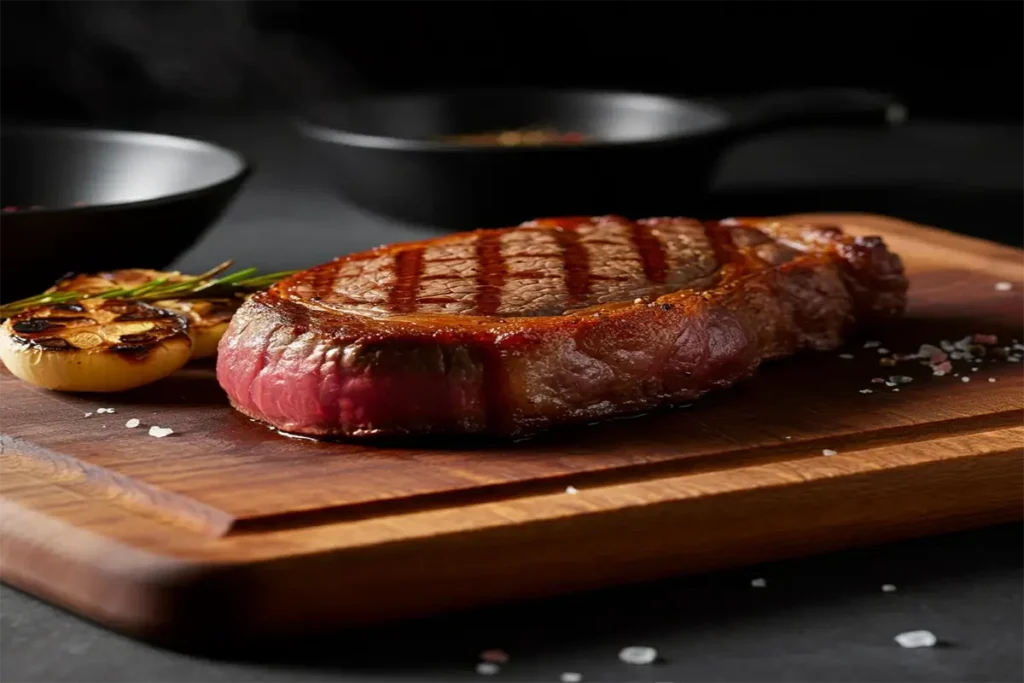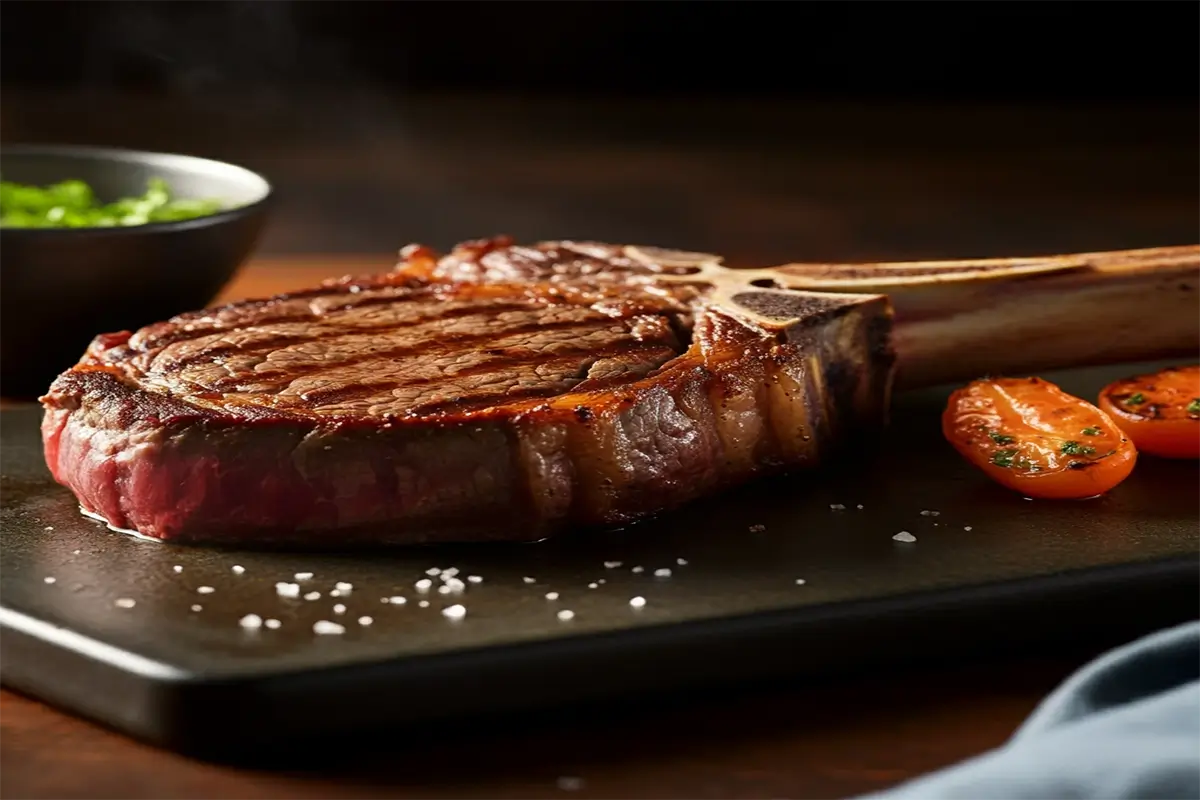There’s something undeniably special about the sizzle of a steak hitting a hot pan or grill, the mouth-watering aroma wafting through the air, and the anticipation of cutting into a beautifully cooked piece of meat. If you’ve ever found yourself wondering how to get that perfect medium rare steak temp, you’re not alone. Many home cooks and seasoned grillers alike strive to achieve that perfect balance of tenderness, juiciness, and flavor. Fortunately, you can master the art of cooking a medium rare steak with just a few key tips and techniques. In this ultimate guide, you’ll learn everything you need to know to hit the perfect medium rare steak temp every single time.
Table of Contents
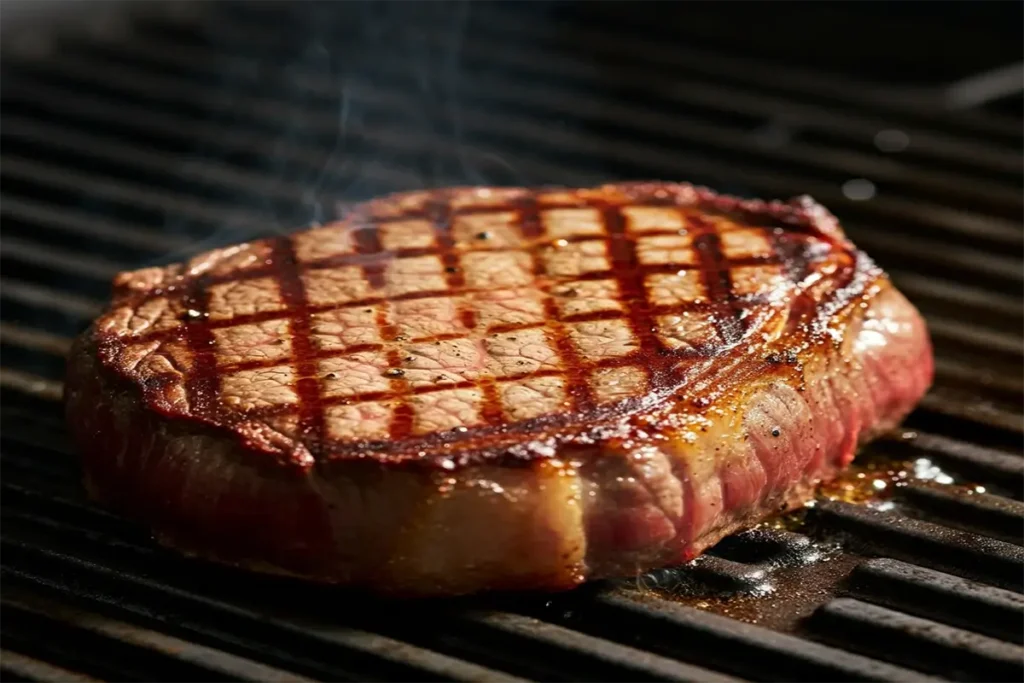
Understanding Medium Rare Steak Temp
Before you dive into cooking, it’s essential to understand exactly what “medium rare” means in the world of steaks. Medium rare steak is a level of doneness that results in a juicy, tender interior, slightly pink but not raw. The meat has a warm center with a deep red color and is cooked to an internal temperature of 130°F to 135°F (54°C to 57°C). This is the sweet spot for many steak lovers, as it keeps the steak tender while enhancing the natural flavors of the meat.
Why Medium Rare Is Often the Best
There’s a reason that medium rare is considered the ideal steak doneness by many chefs and food enthusiasts. At this temperature, the steak remains juicy and tender, with the fat properly rendered, creating a luscious texture. If cooked any longer, you risk drying out the steak or losing the richness that makes a steak so satisfying. A perfectly cooked medium rare steak is both flavorful and visually appealing, with a pink center and slightly caramelized crust on the outside.
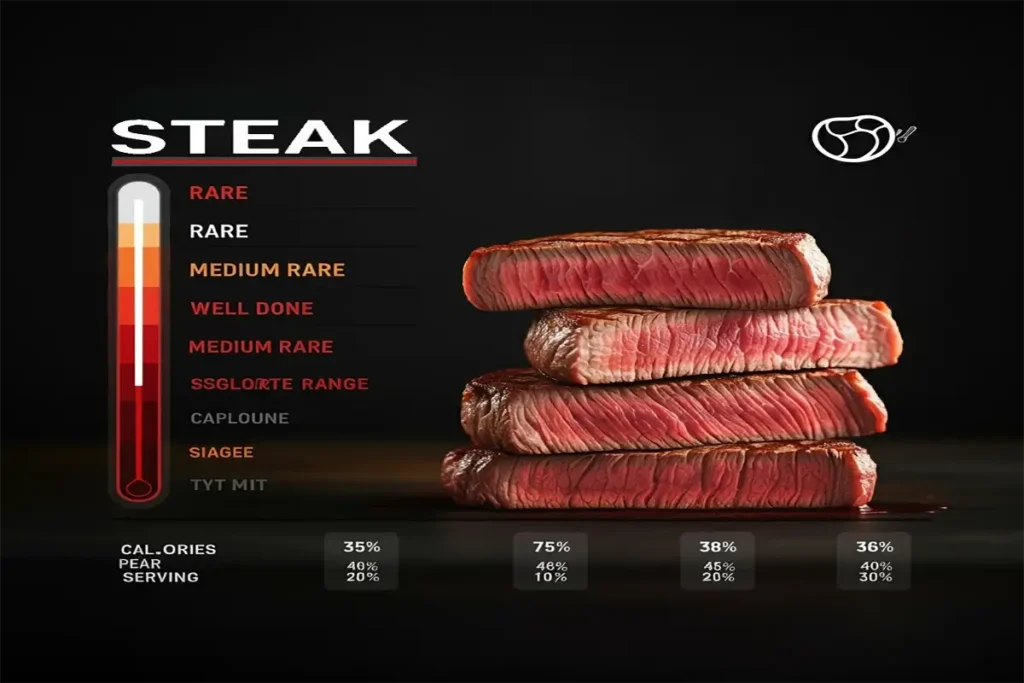
Common Mistakes to Avoid
Achieving the perfect medium rare temp can be tricky. Here are a few common mistakes that can sabotage your efforts:
- Not letting the steak rest: Resting the steak after cooking allows the juices to redistribute, keeping the steak moist and flavorful.
- Underestimating cooking time: Medium rare steaks require precise timing. Too little time, and your steak will be rare; too much, and you’ll overcook it.
- Not using a thermometer: Relying solely on the visual appearance of the steak can lead to inconsistency. A thermometer provides accuracy.
How to Check Medium Rare Steak Temp Without a Meat Thermometer
While using a meat thermometer is the most reliable way to check steak doneness, there are other methods to gauge when your steak has reached medium rare. Knowing how to do this can help you cook confidently, especially if you don’t have a thermometer handy.
The Finger Test: An Easy Method for Checking Steak Doneness
A classic technique for testing steak doneness is the finger test. Here’s how it works:
- Relax your hand: With your hand open and relaxed, gently press on the fleshy part of your palm (below your thumb). This feels soft, just like a rare steak.
- Slightly press the base of your thumb: When your thumb touches the tip of your finger (index or middle), the pressure should resemble that of a medium rare steak—slightly firm but with some give.
By practicing this method, you can get a good sense of the steak’s doneness without the need for a thermometer.
Visual Cues: What to Look For
When your steak is nearing medium rare, check the following signs:
- Juices: Medium rare steaks will release a reddish, not raw, juice. If the juice is clear, your steak may be overcooked.
- Firmness: Press the steak gently with your finger. A medium rare steak will be firm but yield slightly.
- Color: Look for a pinkish-red center with a slight browning on the outside.
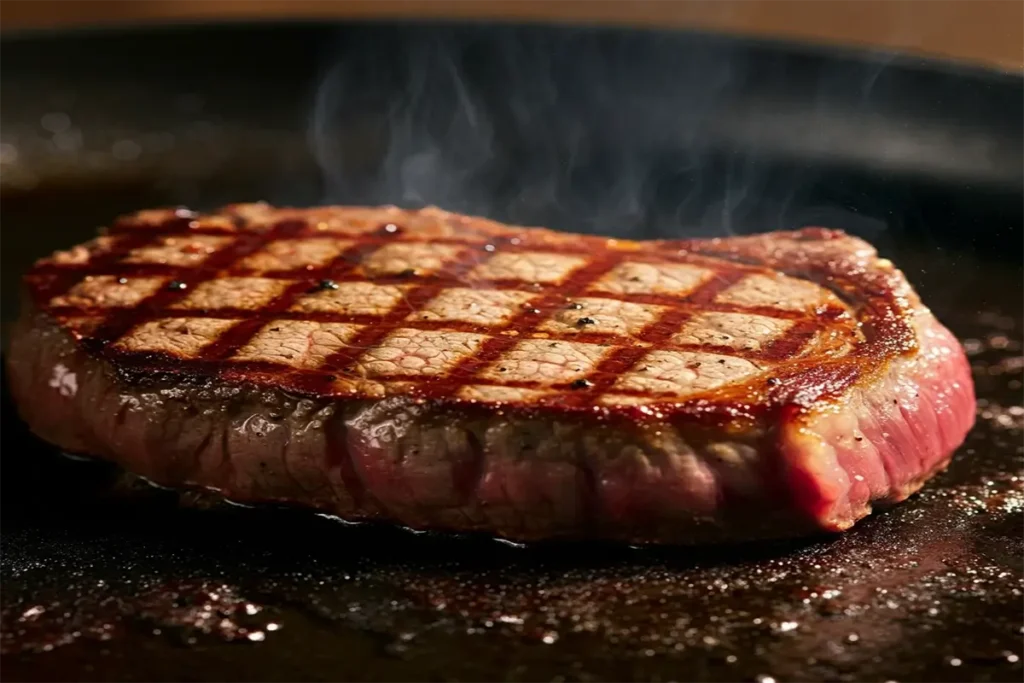
Tools You’ll Need to Achieve the Perfect Medium Rare Steak Temp
To achieve the perfect steak, it’s important to have the right tools on hand. Here are the must-have items for cooking a medium rare steak:
Meat Thermometer
A digital instant-read thermometer is the most accurate way to check the internal temperature of your steak. With it, you can ensure that your steak reaches the perfect medium rare temperature every time. Stick the thermometer into the thickest part of the steak, and make sure it reads between 130°F and 135°F.
Cast Iron Skillet or Grill
Both cast iron skillets and grills are excellent for cooking steaks, and they can both help you achieve that perfect sear. Cast iron skillets retain heat well, which makes them ideal for creating a beautifully browned crust. Grills, on the other hand, can provide a smoky flavor that enhances the overall steak experience.
Tongs and Timer
Tongs are crucial for flipping your steak without piercing the meat and letting the juices escape. Using a timer will help you avoid overcooking or undercooking, especially if you’re following a recipe or cooking at higher altitudes where times may vary.
Step-by-Step Guide for Cooking Medium Rare Steak
Now that you’re familiar with the tools and techniques, let’s walk through the steps to cook your steak to the perfect medium rare temp.
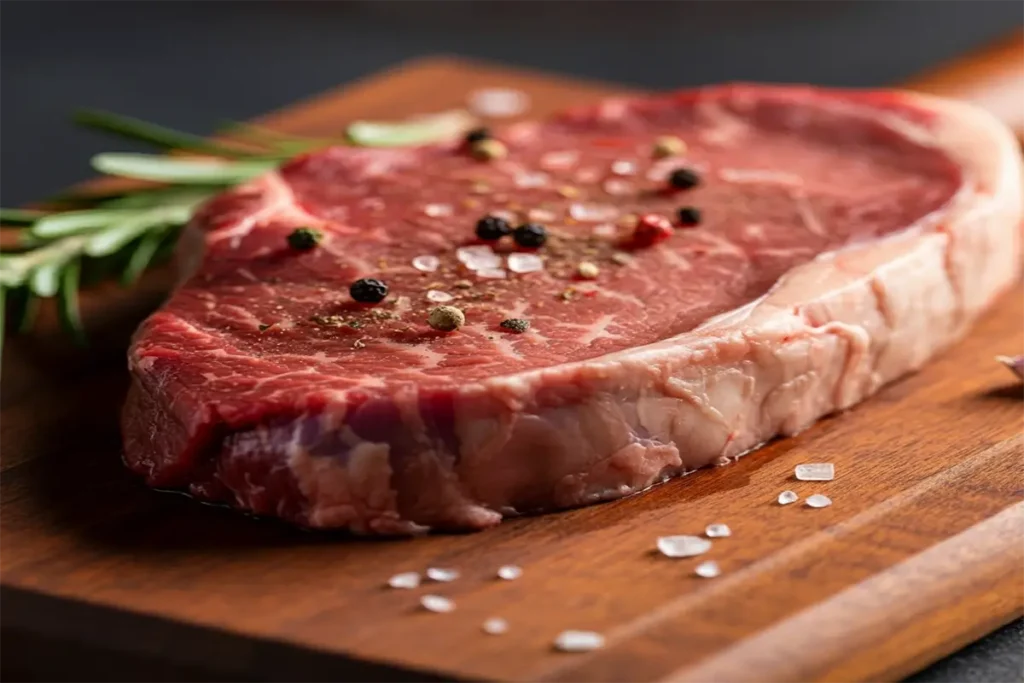
Step 1: Prep Your Steak
Start by bringing your steak to room temperature for even cooking. Pat the steak dry with a paper towel to remove excess moisture, then season generously with salt and pepper. If you like, you can add other seasonings like garlic powder or rosemary for added flavor.
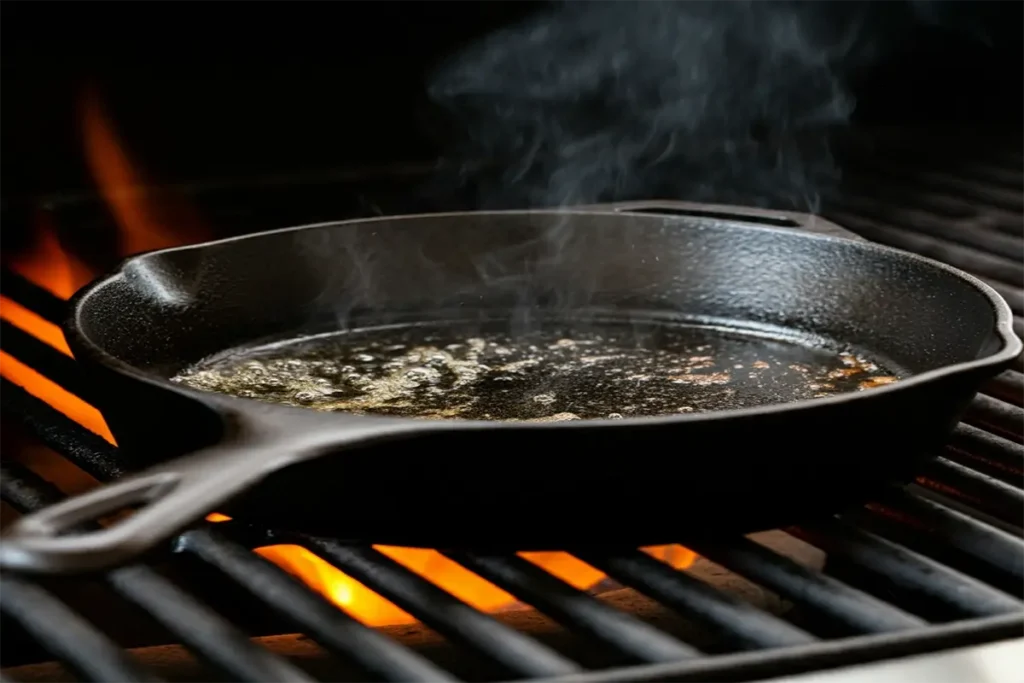
Step 2: Heat Your Pan or Grill
Whether you’re using a grill or skillet, preheat it to high heat. If using a grill, ensure the grates are clean and lightly oiled. For a skillet, use a tablespoon of oil with a high smoke point (like vegetable oil) to prevent sticking.
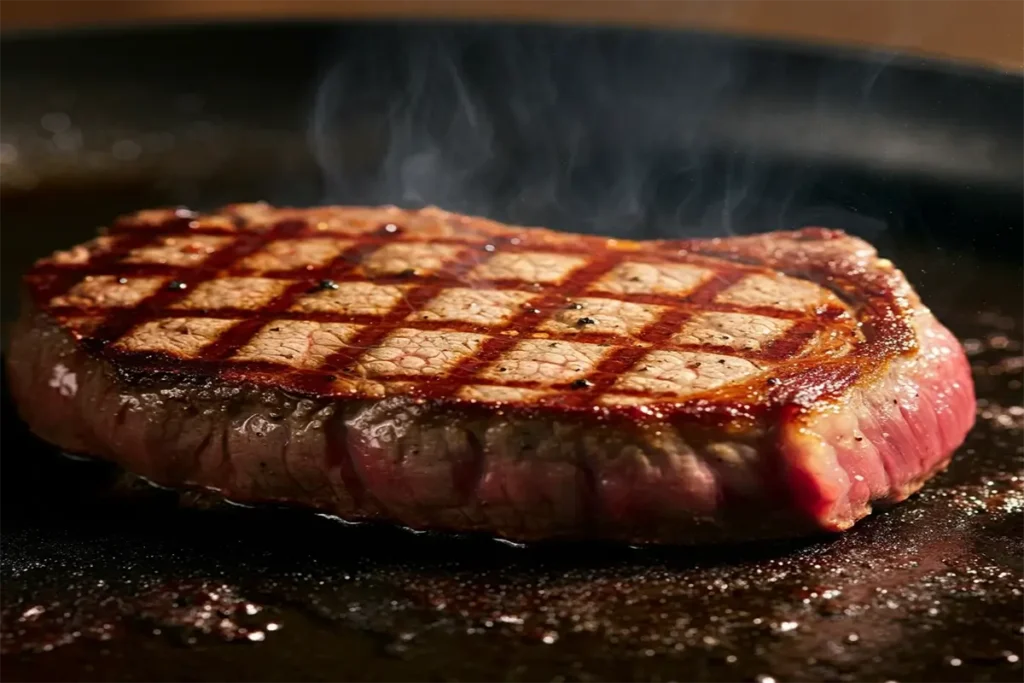

Step 3: Cook the Steak
Place the steak onto the hot surface and let it cook undisturbed for a few minutes to develop a nice sear. Flip the steak and continue cooking for another few minutes. For medium rare, you should cook your steak for about 3-4 minutes per side, depending on thickness.
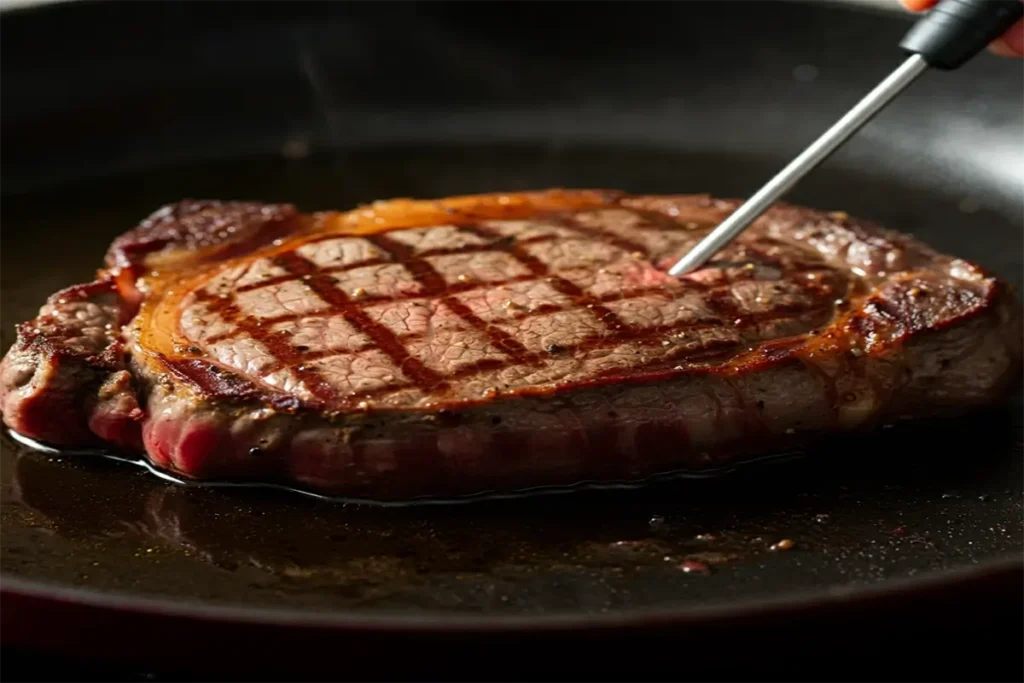
Step 4: Check the Internal Temperature
Once your steak looks beautifully seared on both sides, check the internal temperature with your thermometer. Aim for 130°F to 135°F for medium rare. If you don’t have a thermometer, use the finger test or look for the visual cues mentioned earlier.
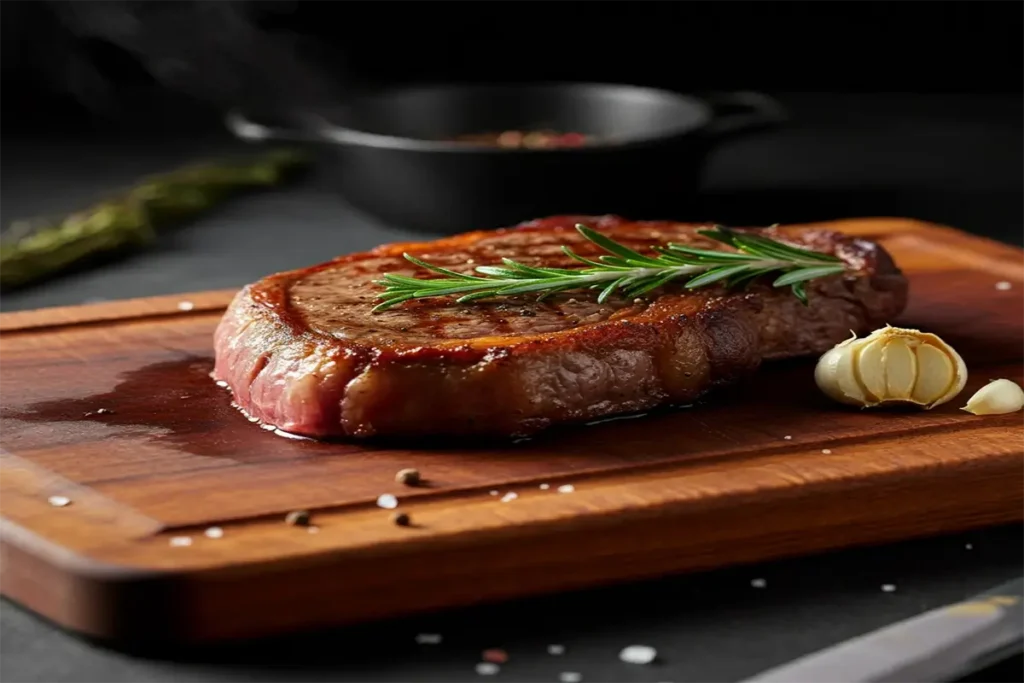
Step 5: Rest the Steak
Let the steak rest for 5-10 minutes after cooking. This allows the juices to redistribute, keeping your steak moist and flavorful.
What Happens If You Overcook or Undercook Medium Rare Steak?
While medium rare is a sweet spot, it’s easy to make mistakes. Here’s a look at what happens when you don’t cook to the perfect medium rare steak temp.
Overcooked Steak
When you overcook a steak, the proteins tighten, causing the meat to lose its juices and become dry and tough. A well-done steak can be harder to chew and lacks the rich flavor you expect from a tender piece of meat. The crust may become overly charred, and the interior will lose its pinkish hue.
Undercooked Steak
On the other hand, undercooking your steak can lead to a raw center, which might be unsafe for consumption. A steak that’s too rare can have a chewy texture, making it less enjoyable. Always aim for that perfect medium rare—cooked enough to be safe, but still rich, tender, and flavorful.
Pairing the Perfect Side Dishes with Your Medium Rare Steak
A perfectly cooked medium rare steak deserves an equally fantastic side dish to accompany it. Here are a few options that complement the richness of the meat:
- Mashed Potatoes: Creamy mashed potatoes are a classic steak side. Their richness balances out the savory flavor of the steak.
- Grilled Vegetables: Grilled asparagus, bell peppers, or zucchini provide a light and slightly smoky contrast to the steak.
- Sauces: Consider serving your steak with a savory sauce like béarnaise or chimichurri for an extra burst of flavor.
FAQ: Medium Rare Steak Temp
Q1: What is the ideal temperature for a medium rare steak?
A: The ideal temperature for a medium rare steak is between 130°F and 135°F (54°C to 57°C).
Q2: Can I cook a medium rare steak on a stovetop?
A: Yes, cooking a medium rare steak on a stovetop is possible. Use a heavy-duty pan, such as a cast-iron skillet, and follow the step-by-step instructions to achieve perfect doneness.
Q3: How do I know when my steak is medium rare without a thermometer?
A: Use the finger test or look for visual cues like a pink center and reddish juices to determine doneness.
Conclusion
Achieving the perfect medium rare steak temp is a matter of precision, patience, and the right tools. Whether you’re using a grill, stovetop, or oven, the key is to monitor your steak’s internal temperature carefully and allow it to rest before serving. With practice, you’ll be able to consistently cook steaks that are juicy, tender, and full of flavor. So, next time you fire up the grill or heat your pan, you can confidently cook the perfect medium rare steak. Happy cooking!
